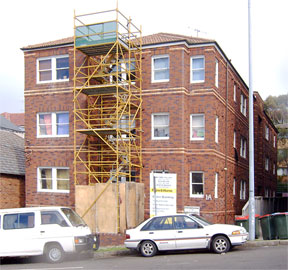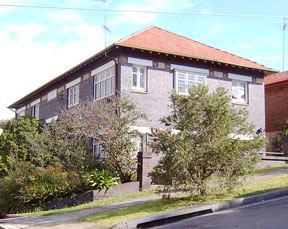
Consider two blocks of flats in Bondi and Newtown. Both were exclusively rental housing stock but NSW State Land Tax was a prime factor in enforcing their subdivision into strata allotments. As exclusively rental housing requires a freehold site, only one tax-free threshold is allowed when subdivided into strata lots.
For example, in the block in Bondi (12 units) 12 tax-free thresholds are allowed, and in Newtown (18 units) 18 tax-free thresholds are allowed.
Accordingly, it is plain to see how state land tax policy promotes the conversion to strata allotments that generate considerable tax revenue.
Numerous examples are available.
Here is a hypothetical example of state land tax on a block of four units in Bronte. The remains rental housing and is under threat from land tax imposed at approximately $100 per week per rental flat and imposed because it is an exclusively rental housing on a freehold site.

Assuming the block is unviable due to imposition of state land tax.
- Developer wants to convert four units offering generous local affordable housing into four strata units.
- All tenants are evicted
- Owner sells the building to a developer for $2 million. The state treasury receives stamp duty on the sale.
- The developer sub-divides and modifies the building and sells each unit for $700,000.
- Stamp duty is generated on the sale of each of the four units.
A veritable ‘stamp duty El Dorado’ ensues for treasury and from then on the strata units will turn over more frequently than an exclusively rental freehold site. Again boosting stamp duty.
State land tax is about subverting local planning by removing existing use as rental housing. This is a significant factor causing the current rental crisis which state treasury has little concern for.